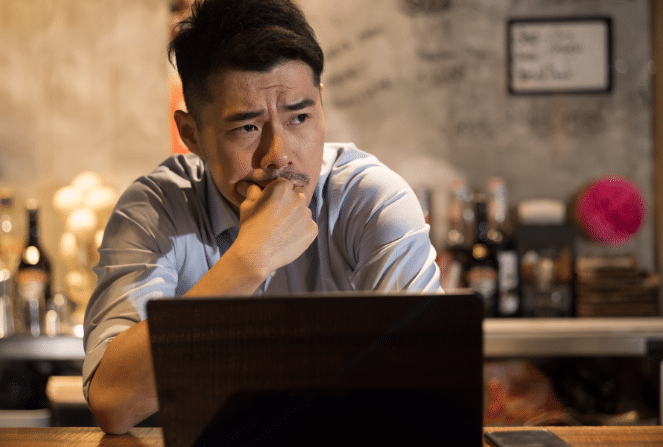Tipping is as American as apple pie — so much so that it has become heavily regulated.
Here’s one tipping regulation that most restaurant owners can cheer for: the tip credit. Find out about the federal laws that allow employers to subsidize labor costs through tipped earnings. (Obligatory disclaimer: this is not intended to be legal or financial advice — always consult with your legal counsel or tax professional if you have questions!)
What is the tip credit?
There’s a federal minimum wage of $7.25 an hour, but many restaurants only pay their servers $2.13. How?
Since servers and bartenders earn the majority of their living from tips, the U.S. Department of Labor created the “tip credit,” which allows employers to count tipped earnings toward their minimum wage requirements.
Under the Fair Labor Standards Act (FLSA), the federal minimum wage is set at $7.25 per hour, but employers can take a credit of up to $5.12 per hour. (Importantly, this number varies by state — more on that later).
If you take the tip credit, you’ll ensure that servers earn at least $7.25 an hour in wages and tips (hopefully much more!), and take the tip credit when it’s time to run payroll.
“Taking” the tip credit: Is it fair to employees?
As most restaurant pros know all too well, this industry is known for its tight margins. That’s why a tip-friendly culture can be beneficial to both hospitality employers and employees. Tipping frequently enables hardworking, well-deserving employees to earn far more than minimum wage requirements — and far more than what revenue constraints allow operators to pay their people. (In fact, many full-service restaurant servers earn $20 or more per hour.)
In states where the tip credit is allowed, and in restaurants where tipping volumes are sufficient, the tip credit allows restaurant owners to reduce some of their labor costs, while ensuring their staff still make at least a living wage.
Which states allow you to take the tip credit?
Based on your location, taking the tip credit may not be an option for you. Make sure you know the legality in your state and how it will affect your recruiting efforts.
States that allow the tip credit
If you live in any of the following states, you’re in luck! As of publication, these are the states that allow some form of the tip credit.
- Alabama
- Arizona
- Arkansas
- Colorado
- Connecticut
- Delaware
- District of Columbia
- Florida
- Georgia
- Hawaii
- Idaho
- Illinois
- Indiana
- Iowa
- Kansas
- Kentucky
- Louisiana
- Maine
- Maryland
- Massachusetts
- Michigan
- Mississippi
- Missouri
- Nebraska
- New Hampshire
- New Jersey
- New Mexico
- New York
- North Carolina
- North Dakota
- Ohio
- Oklahoma
- Pennsylvania
- Rhode Island
- South Carolina
- South Dakota
- Tennessee
- Texas
- Utah
- Vermont
- Virginia
- West Virginia
- Wisconsin
- Wyoming
While all of these states allow a tip credit, check your state laws to see how much you can take per hour. In states with higher minimum wage requirements, you may see higher tip credit amounts — and other states that lower the maximum tip credit amount.
States that ban the tip credit
At the time of publication, these states do not allow employers to take the tip credit for their FOH staff, meaning all employees must be paid at least the state minimum wage.
- Alaska
- California
- Minnesota
- Montana
- Nevada
- Oregan
- Washington
Which employees does the tip credit apply to?
Big picture: In states where you can take the tip credit, it applies only to tipped employees. That means your untipped employees — i.e., your back-of-house staff — are not eligible for a tip credit.
But of course, we’re talking about the law here, so exceptions and caveats abound! Even if it’s allowed in your state, there are still some boxes you have to check before taking the tip credit on all of your tipped employees.
To determine which employees qualify for the tip credit, here are a few questions you need to ask.
- Is the tip credit allowed in my state? Again, a handful of states do not allow employers to take the federal tip credit, period.
- How much do my employees earn in tips? You can only take the tip credit for tipped employees who regularly earn at least $30 a month in tips.
- How much time are my tipped employees spending on non-tip-producing duties?
This one is a little tricky. Basically, the tip credit can only be applied to the hours your tipped employees spend doing work that produces tips OR that directly supports tip-producing work, a.k.a. side work. (Per the DOL, supporting tasks include “dining room prep work, such as refilling salt and pepper shakers and ketchup bottles, rolling silverware, folding napkins, and setting tables”).
However: Employers lose the tip credit for the time their tipped employees spend doing side work if that side work exceeds 20% of their workweek. (This is known as the 80/20 rule.)
Additionally, employers lose the tip credit for the time their employees spend doing side work if they’re doing side work for more than 30 consecutive minutes. In other words, even if an employee spends less than 20% of their total workweek doing side work, the tip credit doesn’t apply to any periods of time where the employee spent 30 consecutive minutes or more on side work.
Suffice it to say, this can get really complicated, really fast. Understanding the rules themselves is only half the battle; being able to track and apply them can be a challenge, too.
If you’re confused (or even if you think you’ve got it down pat) — it’s a good idea to consult with legal counsel to ensure you’re operating above board.
Can I take the tip credit if I implement a tip pool?
Tip pooling, like the tip credit, is pretty heavily regulated at both the federal and state levels. And just like taking the tip credit, it can be easy to be unintentionally out of compliance when it comes to tip pooling.
So what happens if you run a tip pool and you want to take the tip credit (or vice versa)?
There are two key things to note.
- Implementing a tip pool doesn’t preclude you from taking the tip credit.
- However, if you want to take the tip credit, your tip pool cannot include back-of-house (i.e. non-tipped) employees.
In other words: if you’re taking the tip credit, only tipped employees can participate in tip pooing or tip sharing. If BOH employees get tipped out — which is legal in many places — then you can’t take the tip credit for any of your employees, including your FOH folks.
Do I have to notify my employees about the tip credit?
You are required to give your employees notice at the time they’re hired that you’re taking the tip credit.
What is the FICA tip credit?
This is another huge opportunity for employers to increase profit margins without cutting costs on food or labor. Typically, employers are required to pay a share of their employees’ Social Security and Medicare taxes (also known as FICA) based on their income. The program was designed to incentivize employers to better monitor staff tip reporting.
Since many servers and bartenders increase their wages to well over minimum wage in tips, the FICA tip credit allows restaurant owners to decrease their tax liability. Rather than determining their FICA tax liability by total income (including tips), this tax credit allows employers to only pay FICA taxes on employee earnings that are above minimum wage.
Simplify tipping for your team
If you have tipped employees, you have to deal with a lot of cash. It’s taking up managers’ time and creating a reporting nightmare. Move into the future with Kickfin — the easiest way to pay out tips. Kickfin’s capabilities digitize tip payouts, simplify tip pool calculations, and makes reporting a breeze.
Learn more about Kickfin today.






